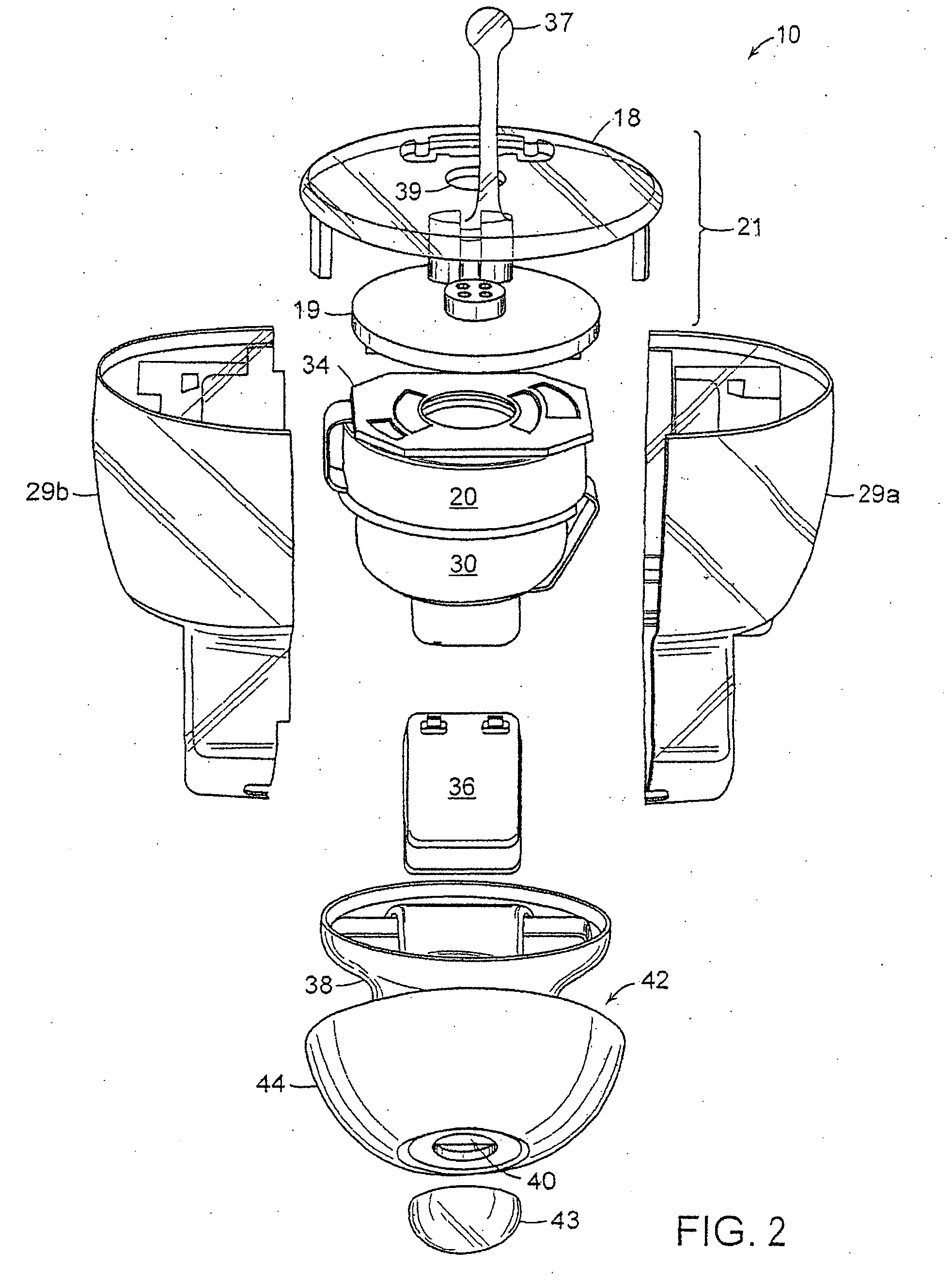Hearing aid
a technology of hearing aids and ear canals, applied in the field of hearing aids, can solve the problems of complex shape of various ear canals, difficulty in operation, and difficulty in adjusting the ear canal, and achieve the effect of convenient operation
- Summary
- Abstract
- Description
- Claims
- Application Information
AI Technical Summary
Benefits of technology
Problems solved by technology
Method used
Image
Examples
Embodiment Construction
[0041]A description of preferred embodiments of the invention follows.
[0042]A hearing aid is shown in FIG. 1 and is given generally as 10. The hearing aid includes a hearing aid shell 28, that is generally made from a durable, rigid or semi-rigid material, such as a molded plastic, and a hearing aid tip 42 that is preferably comprised of a flexible, compliant material to facilitate deep, comfortable fitting of the device in the ear canal of a user. The tip 42 can include a mushroom shaped portion 44 and a body portion 38. As shown in FIG. 1, the body portion 38 connects to the hearing aid shell 28, and functions as a stem-like support for the mushroom shaped portion 44, which extends radially out from the distal end of the tip 42, so as to form an acoustical seal when the device is inserted in the user's ear canal. A sound port 40 extends through tip 42 in order to convey amplified sound from the hearing aid into the user's ear. The tip 42 can be formed of a rubber material, such as...
PUM
 Login to View More
Login to View More Abstract
Description
Claims
Application Information
 Login to View More
Login to View More - R&D
- Intellectual Property
- Life Sciences
- Materials
- Tech Scout
- Unparalleled Data Quality
- Higher Quality Content
- 60% Fewer Hallucinations
Browse by: Latest US Patents, China's latest patents, Technical Efficacy Thesaurus, Application Domain, Technology Topic, Popular Technical Reports.
© 2025 PatSnap. All rights reserved.Legal|Privacy policy|Modern Slavery Act Transparency Statement|Sitemap|About US| Contact US: help@patsnap.com



